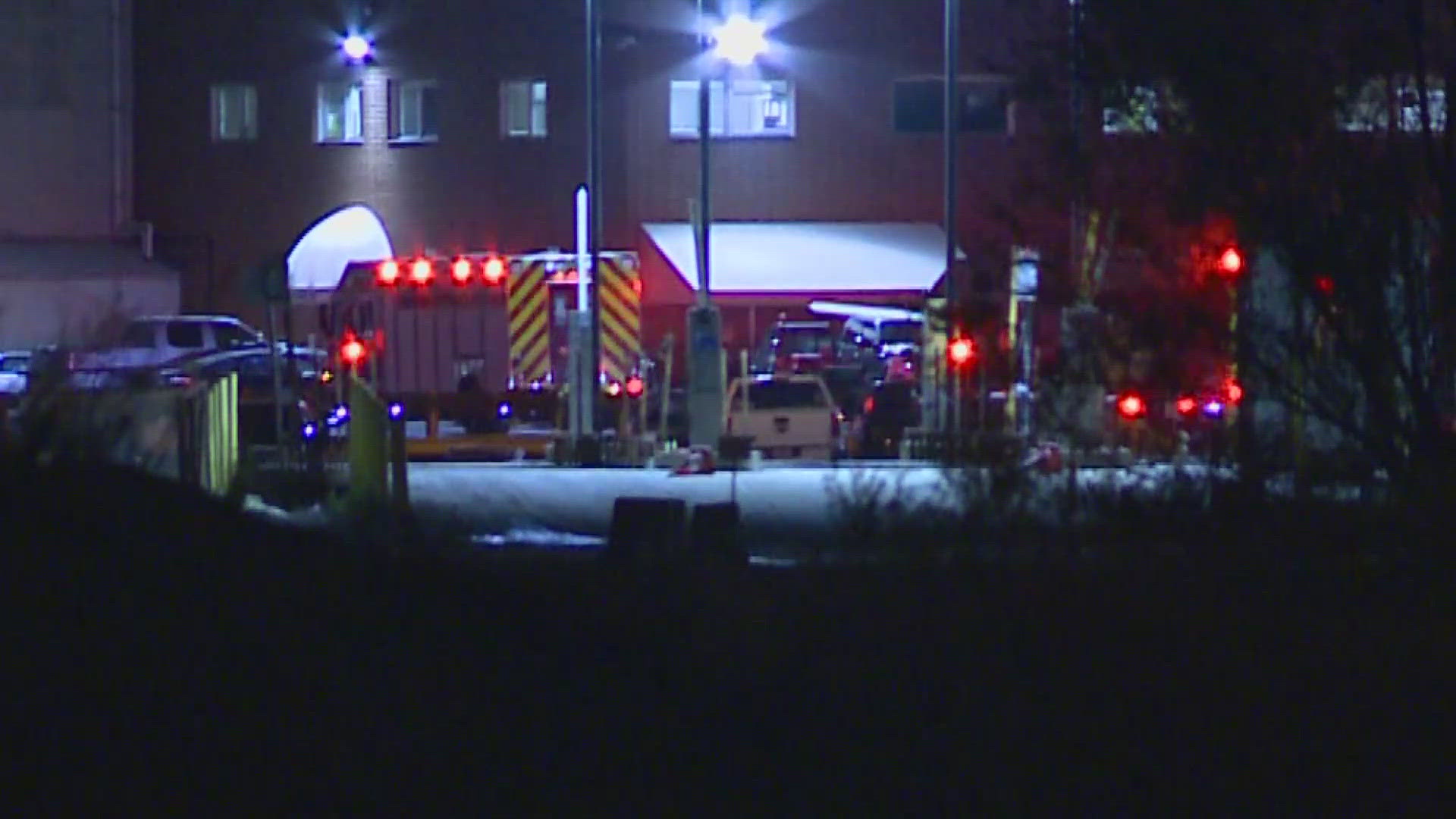Locked behind a door, something very real lurks in the rafters of Cleveland's iconic signature building.
Terminal Tower is the jewel of the city's skyline, but its construction came with costs.
Construction on Tower City began in the 1920s. A number of workers died in the years it took to build the tower, which adds to the lore of the ghost of Terminal Tower.
When you walk in the tower's bronze doors off Public Square, you enter a lobby several stories high with an ornate plaster ceiling.
In a room above the lobby, hidden in the ceiling's rafters waits a ghostly figure.
Building General Manager Stephen Bir is one of the few people with access to the room located on the third floor.
Bir puts his hand on a plywood door with cracked paint.
"The ghost is behind this door. Let's see if we can find it," he says.
With effort, the door's rusted wheels can be forced to slide open revealing the pitch-black room.
Just inside the door is a small, precarious perch with a 50-foot drop into darkness on three sides.
It's a room that was never meant for visitors.
The area houses the top of the plaster ceiling and old wooden beams.
Bir pulls out a small, powerful flashlight and starts moving the light thru the beams.
With a flash of white the image appears.
Hanging in the rafters, a figure in overalls -- the type construction workers would have worn in the 1920s and 30s -- perhaps the key to explaining the ghost.
The ground below Cleveland is soft. To build the tower's foundation, dozens of pits were dug.
Each was 103 feet deep, forming pillars to support the structure.
Each pit was filled with rebar and cement.
A tragic accident happened when a wall between two of the pits collapsed.
Two men were working in one pit, the other was filled with 50 tons of wet cement.
When the wall collapsed, the cement flowed in, burying the men.
Despite desperate rescue efforts, it took hours to recover their bodies.
A building manager's log gets straight to the point as it documents the accident.
A Plain Dealer headline the next day screams "2 BURIED ALIVE IN CONCRETE."
"Patrick Toolis, 29, and Patrick Cleary, 27, workmen, were buried alive and suffocated when a ton of semi-liquid concrete poured around them at the bottom of a 103-foot shaft in the Cleveland Union Terminal area last night," the paper reported.
"Early today, after a five-hour rescue fight that fringed on heroism, fellow workmen had cut and dug through the hardening concrete to their bodies," it continued.
The rescue efforts would be to no avail. One body was recovered the next day about 10:30 a.m. and the other about 12:30 p.m., 11 and 13 hours from the time the men were buried in concrete. It was said that death was immediate.
A single light bulb hangs by the form.
When turned on it illuminates the clearly human figure.
"Legs straight out. Arms straight out. Just hanging there. No head. Just a body," describes Bir.
Its position, across the dropoff formed by the slope of the plaster ceiling, makes it difficult and dangerous to reach. No one is allowed over to the area.
Rumors are when the figure was first discovered police were called to investigate.
Bir says "They would have to go figure out what was hanging from there. Could have been a body. Could have been and unsolved murder case. Not sure at that point.
There was no body or even a ghost.
When first discovered, the figure was cause for concern, but its origins may be more comical than spiritual
"It's a joke," explains Bir. "Plasterers did a joke on fellow workers. They dipped his coveralls into a bucket of plaster and hung it from ceiling."
The effects of decades hanging in the rafters adds to the creepy effect.
"It's covered with dust, cobwebs. He's not been touched by human hands," Bir says.
Whether a joke or maybe a macabre tribute to the men who perished in the construction, Bir smiles as he makes it known, the ghost is a welcome guest.
"I would be afraid to get the curse of the Terminal Tower ghost. I wouldn't want to move it," he says.
Follow Kris Pickel on Twitter: @KrisPickelNews



